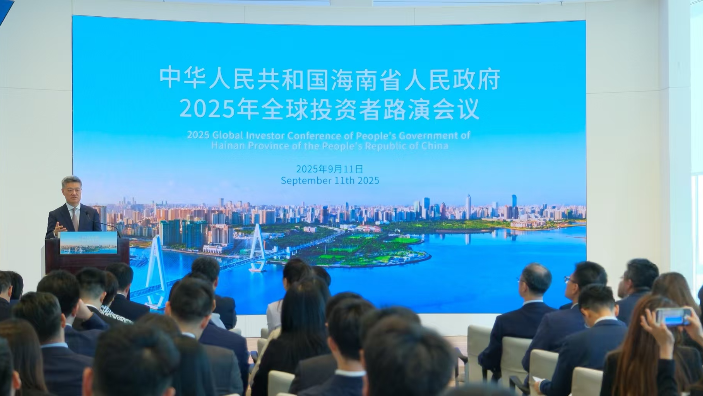By continuing to browser our site and use the services you agree to our use of cookies, Privacy Policy and Terms of Use. You can change your cookie settings through your browser.
The International Media Center of hinews.cn undertakes the mission of news, culture and education communication. Hinews.cn will launch bilingual articles on Hainan's human geography in both Chinese and English. Stay tuned for further update.
“Venturing to Nanyang (Southeast Asia)" was once a unique cultural phenomenon in the eastern part of Hainan Island. It is an epitome of Hainan people who have opened up a new living space, participated in the tide of world economy and culture, and finally returned to their hometown as well reciprocated the hometown. It is also a vivid epitome of the development and changes in modern Hainan, even in China. It has reflected Hainan people’s fighting spirit of continuously venturing to Nanyang and continuously making new achievements in Southeast Asia in the past 100 years, which is full of distinctive island culture features.
-------------------------------------------------------------------------------------------

As early as two centuries ago, people from Qionghai ventured to Nanyang (Southeast Asia). By the middle of last century, western empires occupied and colonized Southeast Asian countries, requiring a large number of laborers for development and construction. At the end of the Qing Dynasty and the beginning of the Republic of China, Hainan’s economy was depressed, soldiers and bandits were rampant, and people here lived a very hard life. But those who went abroad to work and did business all sent money back to buy fields and build houses. Then they also brought their relatives and friends to Southeast Asia. Thus, more and more people yearned for Southeast Asia and some people began buying boats to do business on sending people to Nanyang. There were three or four custom-made large ships in Sanjiangkou Boao for fishing in Sansha of the South China Sea, and transporting goods and people to Southeast Asia.
The harbor in Boao, Qionghai, could be the shelter that suitable for building large ships. With large ships conquering winds and waves, it was easy for the villagers to fish in Xisha area or venture to Nanyang.
When winter came and the northeasterly wind began to blow, the sailing boats would follow the northeasterly wind southward. In summer, when the south wind became the headwind, they would give up sailing, but it was convenient for overseas Chinese to return to Hainan from Southeast Asia. Hainan people usually sailed to or returned from Southeast Asia according to the monsoon and the voyage took about a month every time. The hardship and risks could be easily imagined.
At the beginning, some Boao people who went abroad to Southeast Asia, planned to work on fishing boats or worked as handymen. After they earned money, most of them opened restaurants and coffee bars as well as married the native.
He Daqi was an outstanding representative among Qionghai people who ventured to Southeast Asia
According to the Hainan Encyclopedia, in 1883, He Daqi went and visited his Qionghai fellow villagers in Haikou, after several years, he went to Vietnam by a merchant ship. In 1886, being introduced by a fellow villager, he went to Malaysia to work as a rubber worker, and then became a mechanic in his German captain’s company. His fate had also been changed at that time. “Grandpa’s personal history is not only one of the most legendary stories in Haikou port, but also an example of how our family educated our descendants. Being honest will finally pay off. This is the fundamental family discipline that every member has inherited the most.”

He Biling, the granddaughter of He Daqi, said that when the German captain and his wife returned to Hamburg for a vacation that year, they unfortunately lost a luggage full of jewelry, stocks and land deeds in a hurry. The couple who had already returned to Germany were very disappointed that they would never find the luggage again. Actually, the aim that they came back to Hamburg was to deal with their huge stock business. If they could not find it, they would face bankruptcy. Surprisingly, after three months, He Daqi brought the luggage back to them in perfect condition. It turned out that when the couple left, they forgot the luggage on a tea table in the living room. The German captain took the luggage with great joy and hugged this Chinese boy tightly. From then on, he became the captain’s most trustworthy family housekeeper. Soon, he was appointed by the captain to work as a sailor on ocean-going ships. Because of knowing English, several years later he was promoted to be a captain and a deputy of German ships and often traveled between Europe and Malaysia. In return for his hard work, He Daqi was sent by the German captain to Hamburg, specializing in German language and business management.
Born in Qionghai Hainan, He Daqi had never dreamed of receiving modern education in distant Germany. He had made many “first” innovations in Hainan: he founded the first fleet of ships and opened a new route from Haikou to Southeast. He was one of the earliest comprador capitalists in Haikou port, as an agent for Shell and other various businesses. He covered almost all fields of Hainan industry at that time and became the richest man in Hainan. He also founded Hainan’s first rubber garden, Qiongan Rubber Garden, which had brought an upsurge of overseas Chinese investing in the development of Hainan’s rubber plantation industry since then and became a legend of Hainan’s rubber empire.
I once interviewed Mr. Lu Jiazhao, a writer from Qionghai, and talked about He daqi. He said that when He Daqi went to Southeast Asia, he worked as a engine mechanic and learned from a German chief engineer for a period of time. Thus, he was very familiar with the machine on board. He Daqi worked hard and was often instructed by the chief engineer. Then he became expert in ship engineering. Around 1925, He Daqi built Qionghai's first mechanical ship in history, which greatly improved the fishing operations of Qionghai fishermen and also created new convenient conditions for Qionghai people to venture to Southeast Asia.
The adventurous experiences, magnanimity and foresight make He Daqi a successful industrialist, who has both western and Chinese old-school way of thinking. He has a large family which is famous for the family tradition and family precepts. He once set out from Hainan, went to Southeast Asia, and traveled to the West. His descendants also distribute all over the Southeast Asia and even Europe, Canada and the United States. The story of this King of Ship in Southeast Asia and his family, is an epitome of Hainan people who open up a new living space, participate in the tide of world economy and culture, and finally return to their hometown as well reciprocate the hometown. It is also a vivid epitome of the development and changes in modern Hainan and even in China. It has reflected Hainan people’s fighting spirit of continuously making new achievements in the past 100 years in Southeast Asia, which is full of distinctive island culture features.
"Qiaopi" can best reflect the feelings of overseas Chinese
Like He Daqi, many successful overseas Chinese have the childlike feelings of never forgetting to requite their hometown, which usually can be reflected in many ways. And “Qiaopi" is one of them.
People in the eastern part of Hainan Island particularly liked their houses facing the south. Apart from the function of being warm in winter and being cool in summer, people at time would like to ask:"was there “south wind” blowing through your house?" It means, were there any relatives of your family in Southeast Asia? Would they send any letters back? At that time, they would say, was there any Qiaopi sent to your family?
What is closely related to venturing Nanyang is the “Qiaopi”, commonly known as “Fanpi” or “Yinxin”, which refers to a kind of remittance and family letter sent to China by overseas Chinese through domestic and overseas non-governmental organizations. It was a special mail carrier combining letter and remittance.
As for “Pi”, Wang Zhangcan, a Qionghai writer, said that all countries in Southeast Asia and Qionghai, Wenchang districts had the corresponding “Pi Bureaus”. “Pi Bureaus” accepted overseas Chinese’ “Pi” (mostly money and letters) and took handling fees. After a batch of “Pi” were collected, the staff would take them back to Hainan and hand them to the corresponding “Pi Bureau” in Qionghai and Wenchang City. Then Pi Bureau would send staff to those family members according to their addresses. After the family received the money, they should sign a receipt. Then they could also write a letter and entrust it to Pi Bureau to send to Southeast Asia.
Chen Junji, a writer from Qionghai, has written an article entitled There was “Qiaopi” for my family, where he narrated his own experience in his hometown: those families that had overseas Chinese relatives often stared at the village entrance, looking forward to a middle-aged men appearing, who had a big bag made of tung oil cloth hanging on his shoulders and carried a long-handled oil-paper umbrella...Of course, that family would be extremely happy if they got the letter; if the letter belonged to someone else, they would also congratulate each other friendly. At that time, I had two uncles who drifted to Southeast Asia in their early years, one in Thailand and the other in Cambodia. They both worked for other people and had low incomes. Thus, although there were “Qiao (overseas Chinese)” in my family, there were few “Pi (the letter and remittance)” for us, only two or three times a year. There was not much money every time, sometimes 30 to 50 Hong Kong dollars, sometimes 100 Hong Kong dollars. But the money did not matter at all. The most important thing was that the mailing of “Pi” could show that relatives in distant foreign countries were safe ...
During the interview, Fu Qiaodi from Qionghai told me a story: there was another Qionghai emigrant who had lived overseas for a long time. He felt very guilty for his wife who had been waiting for him in his hometown. So he sent money to his wife in Qionghai through “Qiaopi” and let her build a house. Then the wife exactly built a beautiful two-storey house. Now she is 90 years old, but what she must do every day is to clean the house carefully, which seems to be waiting for the return of her husband...
In terms of “Qiaopi”, whether overseas Chinese who ventured to Southeast Asia were rich or not, they would never forget to help their relatives, even the distant relatives——this kind of love for family and country is one of the motives that Chinese nation keeps going. (Ye Haisheng)
FTP Expert Talks | Xiaodong Lee, Vice President of the Internet Society of China and Founder of the Fuxi Institution: Hainan is the "Nebula" of New Digital Youth
09:47, 12-September-2025Hainan Issues Offshore RMB Bonds in HK for 4th Consecutive Year
09:46, 12-September-20252025 Hainan FTP International Students Content Creation Project
02:28, 12-September-2025What Makes "Hainan Travel" So Appealing?
09:38, 11-September-2025100 Days to Go: What's Next for Hainan-Hong Kong Cooperation?
09:38, 11-September-2025Expert Talks Ep. 4: The Future of the FTP's Digital Economy
09:35, 11-September-2025By continuing to browser our site and use the services you agree to our use of cookies, Privacy Policy and Terms of Use. You can change your cookie settings through your browser.





